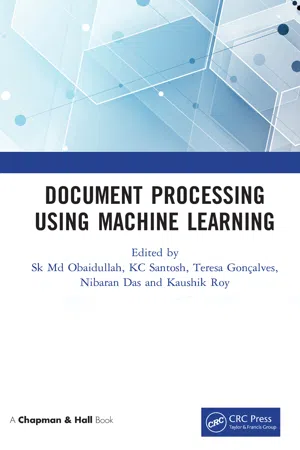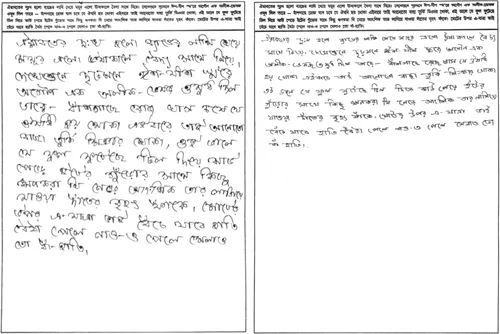
Document Processing Using Machine Learning
- 168 pages
- English
- ePUB (mobile friendly)
- Available on iOS & Android
Document Processing Using Machine Learning
About This Book
Document Processing Using Machine Learning aims at presenting a handful of resources for students and researchers working in the document image analysis (DIA) domain using machine learning since it covers multiple document processing problems. Starting with an explanation of how Artificial Intelligence (AI) plays an important role in this domain, the book further discusses how different machine learning algorithms can be applied for classification/recognition and clustering problems regardless the type of input data: images or text.
In brief, the book offers comprehensive coverage of the most essential topics, including:
· The role of AI for document image analysis
· Optical character recognition
· Machine learning algorithms for document analysis
· Extreme learning machines and their applications
· Mathematical foundation for Web text document analysis
· Social media data analysis
· Modalities for document dataset generation
This book serves both undergraduate and graduate scholars in Computer Science/Information Technology/Electrical and Computer Engineering. Further, it is a great fit for early career research scientists and industrialists in the domain.
Frequently asked questions
Information
1
Artificial Intelligence for Document Image Analysis
1.1 Introduction
1.2 Optical Character Recognition

A document depicting multiple degrees of slant for different characters.

Similarity between different characters in Bangla.

Table of contents
- Cover
- Half-Title
- Title
- Copyright
- Contents
- Preface
- Editors
- Contributors
- 1. ArtificialIntelligenceforDocumentImageAnalysis
- 2. AnApproachtowardCharacterRecognitionofBanglaHandwrittenIsolatedCharacters
- 3. ArtisticMulti-CharacterScriptIdentification
- 4. AStudyontheExtremeLearningMachineandItsApplications
- 5. AGraph-BasedTextClassificationModelforWebTextDocuments
- 6. AStudyofDistanceMetricsinDocumentClassification
- 7. AStudyofProximityofDomainsforTextCategorization
- 8. SupervisedLearningforAggressionIdentificationandAuthorProfilingoverTwitterDataset
- 9. TheEffectofUsingFeaturesComputedfromGeneratedOfflineImagesforOnlineBanglaHandwrittenCharacterRecognition
- 10. HandwrittenCharacterRecognitionforPalm-LeafManuscripts
- Index